All about fertilizing nitroammofosk
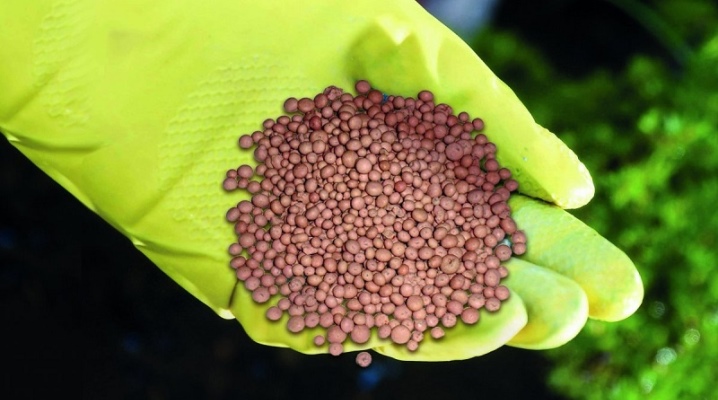
Nitroammophoska found widespread use in agriculture almost half a century ago. During this time, its composition remained unchanged, all innovations related exclusively to the percentage of the active components of the fertilizer. It has proven itself in various climatic zones, the best results have been achieved in central Russia.
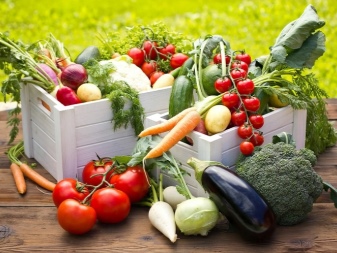

Composition
Nitroammofoska is one of the most popular fertilizers among summer residents and gardeners, its chemical formula is NH4H2PO4 + NH4NO3 + KCL. In simpler terms, top dressing includes nitrogen, phosphorus, and potassium. For full growth and development, any plants require nitrogen, it is the basis for the life support of agricultural crops. Due to this microelement, representatives of the flora increase the green mass, which is needed to maintain metabolism and full-fledged photosynthesis.
With a nitrogen deficiency, plants develop too slowly, wither and look underdeveloped. In addition, in conditions of a lack of nitrogen, their growing season is shortened, and this negatively affects the volume and quality of the crop. Nitroammofosk contains nitrogen in the form of a readily available compound. Phosphorus is very important for young seedlings, as it participates in cell multiplication and helps to strengthen the rhizome. With a sufficient amount of phosphorus, the culture forms resistance to external unfavorable factors.
The lack of potassium has the most detrimental effect on the immunity of green crops, causing a slowdown in its development. Such plants become susceptible to fungal infections and the activity of garden pests. In addition, potassium improves the taste of foods. The seedlings experience the maximum need for this microelement at the stage of active growth.
Thus, this fertilizer has a complex beneficial effect on crops and contributes to the active growth of horticultural crops.

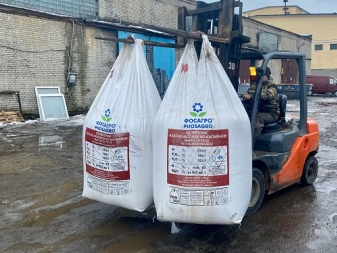
Differences from nitrophoska
Inexperienced gardeners often confuse nitroammophoska and nitrophosphate. The latter has the same formula, but reinforced with another trace element - magnesium. However, in terms of efficiency, nitrophosk is significantly inferior to nitroammophos. The fact is that nitrogen is present in it only in the nitrate form, it is quickly washed out from the substrate - the effect of the complex on the culture is weakened. In nitroammophos, nitrogen is present in two forms - nitrate and also ammonium. The second multiplies the period of the top dressing.
There are several more compounds that resemble nitroammophos in principle of action, but have some differences in structure.
- Azofoska - this nutritional composition, in addition to phosphorus, nitrogen and potassium, also includes sulfur.
- Ammofoska - in this case, sulfur and magnesium are added to the base components, and the share of sulfur is at least 14%.
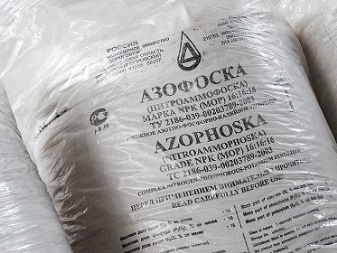
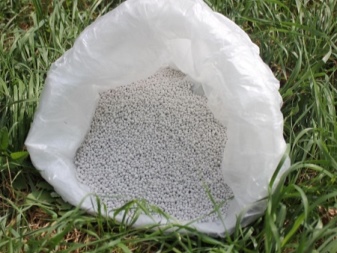
Varieties by concentration of substances
The basic components of nitroammophoska, that is, the NPK complex, are constant. But the percentage of presence of each of them can vary. This allows you to create the most effective formulations for different types of soil.
- 16x16x16 - all micronutrients are present here in equal proportions. This is a universal top dressing, it can be applied to any soil.
- 8x24x24 - optimal on poor substrates. It is mainly applied for root crops, as well as potatoes and winter cereals.
- 21x0x21 and 17x0.1x28 are optimal for lands that do not need phosphorus at all.
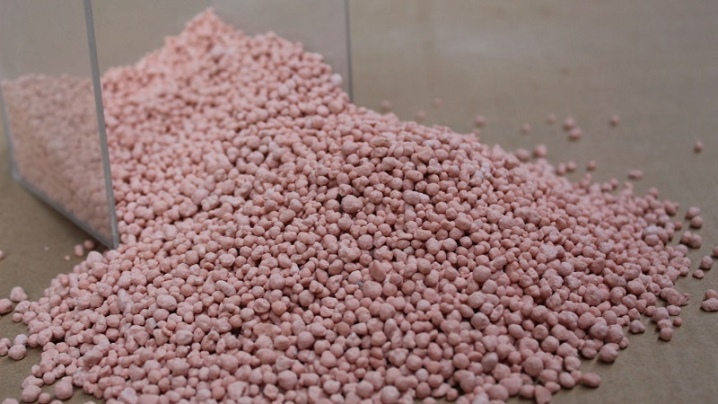
Advantages and disadvantages
The main advantage of nitroammophoska is that this agrochemical is distinguished by an increased concentration of useful microelements, therefore, its use can significantly save time and money. With minimal expenditure of effort and money, you can quickly cultivate a large sown area in comparison with other varieties of mineral complexes. Like any chemical, nitroammophoska has its pros and cons. On the one hand, this is a highly productive top dressing, on the other hand, it behaves quite aggressively and requires careful handling. However, it spurs stimulation of cultures so effectively that users simply “close their eyes” to many of its disadvantages.
Nitroammofoska:
- provides agricultural crops with all microelements important for full regeneration;
- contributes to an increase in yield from 30 to 70%;
- increases the strength of the stems and resistance to lodging;
- increases resistance to fungal infections and low temperatures;
- granules are characterized by low hygroscopicity, therefore, throughout the entire storage period, they do not stick together and do not cake;
- dissolves in water without residue.
It has been proven that a three-component composition works much more efficiently than several single-component ones. At the same time, nitroammophoska has a relatively short shelf life, it cannot be bought for future use. Therefore, before starting work, you should accurately calculate how much substance you need. Nitroammofosk is a fire hazardous substance. It can ignite if stored or transported improperly. The granules should be stored separately from any other dressings in order to exclude the possibility of a chemical reaction - its consequences can be the most unpredictable, up to fire and explosion.
Expired fertilizer cannot be used, unused residues need to be disposed of in a timely manner.
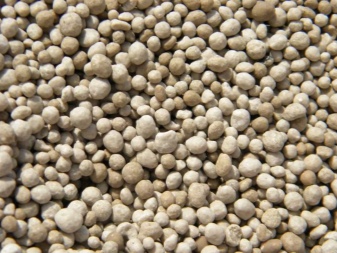

Manufacturers
Voronezh production of "Mineral fertilizers" - one of the largest holdings of the chemical industry in our country, the only producers of mineral fertilizers in the Central Black Earth Region of Russia. For more than 30 years, the company has been producing high quality products; its merits have been appreciated not only by domestic agricultural producers, but also by the majority of farmers abroad. It produces nitroammofoska 15x15x20, 13x13x24 and 8x24x24 with a high proportion of potassium - this is due to the parameters of local soils, which, with such a ratio of microelements, give maximum yields. In Nevinnomyssk, several varieties of nitroammophoska are produced with very different proportions of the three active ingredients. The assortment portfolio includes compositions 10x26x26, 15x15x15, 17x17x17, 17x1x28, 19x4x19, 20x4x20, 20x10x10, 21x1x21, as well as 22x5x12, 25x5x5 and 27x6x6.
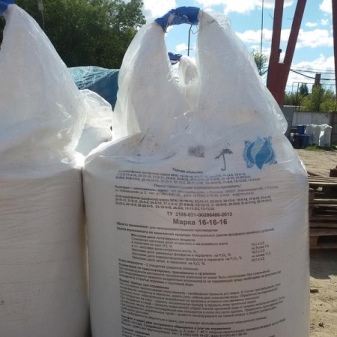

Terms of introduction
Nitroammofosk is characterized by certain proportions of ingredients. Therefore, it is important to choose a brand of fertilizer taking into account the individual characteristics of soils and specific varieties of crops. It is believed that nitroammofoska achieves the greatest result on irrigated chernozems, as well as gray soils. As a basic fertilizer on such soils, as well as on clayey soils, top dressing is best done in the autumn, on lighter sandy soils - in the spring.
Important! The practice of using nitroammophoska in private gardens and vegetable gardens has been around for several decades. However, to this day, many summer residents are wary of it - they believe that its introduction causes the accumulation of toxic nitrates in the fruits. In part, these fears are justified, since any complex fertilizer applied at the end of the growing season necessarily leaves traces of chemicals in plant tissues.
However, if you stop feeding before the formation of ovaries, then the nitrate residue of the fruit will be within the safe limits.Therefore, it is not recommended to introduce top dressing at the stage of fruit ripening.

How to apply?
Norms
As practice shows, nitrates can be present not only in nitroammophos, but also in organic components. Their frequent and abundant use can harm the ecological safety of the fruit, and to a much greater extent than the moderate application of store dressings. Several factors affect the introduction rates of nitroammophoska: the type of culture, the structure and composition of the soil, the presence and frequency of irrigation and the climate. Despite this, agronomists have established some average dosages, which are obtained by many years of practice in the use of a complex of nutrients in agriculture.
- Winter crops - 400-550 kg / ha.
- Spring crops - 350-450 kg / ha.
- Corn - 250 kg / ha.
- Beets - 200-250 kg / ha.
When feeding horticultural crops on summer cottages and household plots, the following dosages of administration are recommended.
- Potatoes - 20 g / m2.
- Tomatoes - 20 g / m2.
- Currants, gooseberries - 60-70 g under one bush.
- Raspberry - 30-45 g / m2.
- Mature fruit-bearing trees - 80-90 g per plant.
The number of dressings can vary depending on the characteristics of the soil, the growing season of the crop, as well as the time of application of other types of fertilizers. The manufacturers of the complex give detailed instructions in which they prescribe the timing and standards for the introduction of nitroammophoska for each individual case.
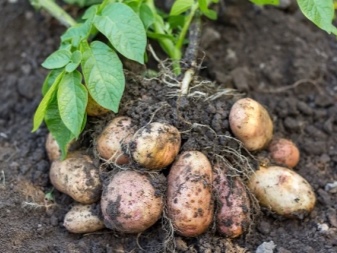
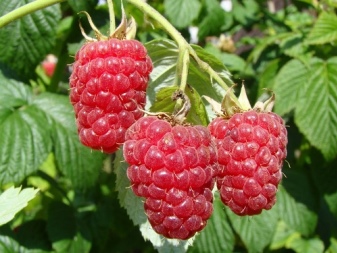
Application methods
Nitroammofoska is equally effective for feeding vegetables, root crops, corn, sunflowers, cereals and flowers. It is often introduced to fertilize flowering shrubs and fruit trees. The composition is introduced into the soil when plowing the site before planting crops as a basic fertilizer. Also, nitroammophoska is used in a dissolved state for foliar feeding.
The complex can be introduced in several ways:
- pour dry granules into holes or beds;
- scatter granules over the surface of the earth during autumn digging or before planting plants;
- dissolve the granules in warm water and water the planted plants under the root.
The granules are scattered on the ground and evenly distributed, after which they are poured over with water. If the soil is moistened, no additional watering is needed. Nitroammophoska can be mixed with humus or compost, this must be done immediately before planting seedlings in open ground.
For foliar processing, the NPK complex is used in minimal dosages. For berry, flower, as well as fruit and vegetable crops for this 1.5-2 tbsp. l. the granules are diluted in a bucket of warm water and the seedlings are sprayed with the resulting solution.
Top dressing is carried out on cloudy days or in the evening, after which the bushes are irrigated with plain water at room temperature.
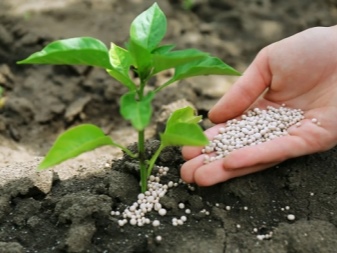
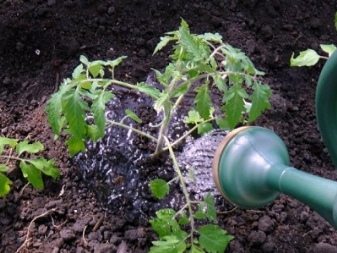
Nitroammophoska is used for all types of garden and garden plants, it has a particularly beneficial effect on tomatoes. After fertilization, tomatoes are less sick with late blight and rot. It is advisable to carry out top dressing twice a season. The first time - right after landing, at this moment a complex with the NPK formula 16x16x16 is used. The second - at the stage of fruit setting, it is better to use fertilizer with an increased percentage of potassium.
You can use another scheme - tomatoes are treated with nitroammophos 2 weeks after planting in open ground. A solution of 1 tbsp is applied under each bush. l. the drug, diluted in 10 liters. water. For each plant, half a liter of the composition is consumed. After a month, the procedure is repeated. At the time of flowering, it is better to use a spraying with a liquid composition. For this, 1 tbsp. l. nitroammophoska and 1 tbsp. l. sodium gummate is diluted in a bucket of water.
In order for the potato bushes to grow faster and the roots to be more developed, the tuber can be fed by introducing nitroammofoska into the soil. The composition is highly productive for cucumbers, it stimulates an increase in the number of ovaries, prolongs the overall fruiting period and improves the taste characteristics of the crop. The bush must be fertilized twice - when preparing the beds for planting, and then at the very beginning of flowering, even before the formation of ovaries. NPK complex can also be used for seedlings. It satisfies all the needs of young seedlings in the necessary trace elements. The first treatment is carried out 10-15 days after placing the sprouts in separate containers, for this 0.5 tbsp. l. diluted in 5 liters of water and poured under a bush. After 2 weeks, feeding is carried out again.
Strawberries are fertilized with a scattering of granules on top of the ground at the rate of 40 g / m2. Currants and gooseberries are fed, falling asleep under one plant, 60-70 g of nitroammofoska per bush. When planting young raspberries, 50 g of fertilizer are added to each planting hole, and at the end of flowering, they are sprayed with an aqueous solution of 40 g of granules per bucket of water, pouring 8-10 liters of composition per square meter.
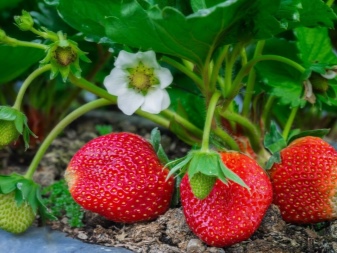
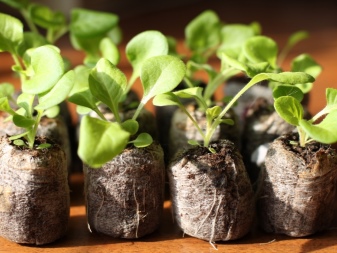
Famous lovers of potassium, nitrogen and phosphorus are grapes, watermelons and melons. It has been proven that these southern representatives of the flora can grow well, develop and bring a large harvest in the central zone of Russia. But this is achievable only with regular high-quality fertilizing of crops with mineral and organic compounds. The grapes are fed with nitroammophos in the form of root and foliar dressings. The complex stimulates the active production of starches and sugars, as a result, the fruits are sweeter and tastier.
Top dressing of fruit plants (apple, pear, cherry) is carried out according to the following scheme. When planting a seedling on one tree, introduce 400-450 g. At the end of flowering, root top dressing is performed. To do this, 50 g of the chemical is diluted in a bucket of water. The earth is watered in a near-stem circle, 40-50 liters per plant.
Not a single site is complete without flowers, they decorate it from early spring to mid-autumn. For the flowering to be colorful and lush, plants need good nutrition. Nitroammophoska is actively used to feed roses. The granules are introduced into moistened soil or diluted with water. It is best to introduce the NPK complex in the off-season - in the spring it becomes a source of useful trace elements for building up green mass, and with the onset of autumn, it replenishes the balance of micronutrients and thus prepares plants for winter frosts.
In the spring and autumn, fertilizing is carried out for lawns. The complex has a beneficial effect on both annual and perennial grasses. Indoor flowers, like garden flowers, require good nutrition. The use of nitroammophoska significantly increases the number of buds and flowering crops, activates their growth. Flowers are sprayed in spring with an aqueous solution made up of 3 tbsp. l. substances diluted in 10 liters of water.


Security measures
Nitroammophoska belongs to the group of explosive substances, therefore it is important to avoid overheating during storage, transportation and use. The complex can be stored exclusively in cool rooms made of brick or concrete. The ambient temperature should not exceed 25 degrees, and the air humidity level should not exceed 45-50%.
In the room where the nitroammophoska is stored, it is not allowed to use an open flame or any heating devices. NPK cannot be stored for longer than 6 months. After the expiration date, it largely loses its nutritional properties, becomes fire and explosive. Transportation of nitroammophos is allowed exclusively by land transport in bulk or packed. You can only buy a nitroammophoska made in strict accordance with GOST 19691-84.
The use of nitroammophoska has a beneficial effect on the qualitative and quantitative parameters of fruiting. The main components of this nutritional complex activate biochemical processes in plant tissues, thereby accelerating the growth of green mass and increasing the number of fruits.
The drug makes the seedlings resistant to fungal diseases, in addition, the introduction of nitroammofoska can scare off many pests, for example, a bear.
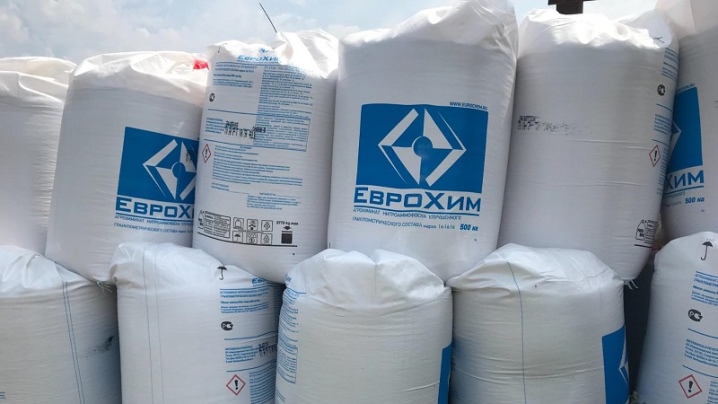
In the next video, you are waiting for top dressing of grapes at the root in the spring.













Do not confuse the shelf life of fertilizers for sale and their shelf life for plant nutrition, which quietly exceeds 3-5 years. The main enemy is moisture. Fertilizers can be stored hermetically for more than 10 years. The most unstable are ammonium salts (contain urea), they lose nitrogen during storage, but this does not mean that fertilizer cannot be applied. Phosphorus and potassium are practically eternal, if the humidity regime is observed and the substance is not washed out.
Thank you.
The comment was sent successfully.